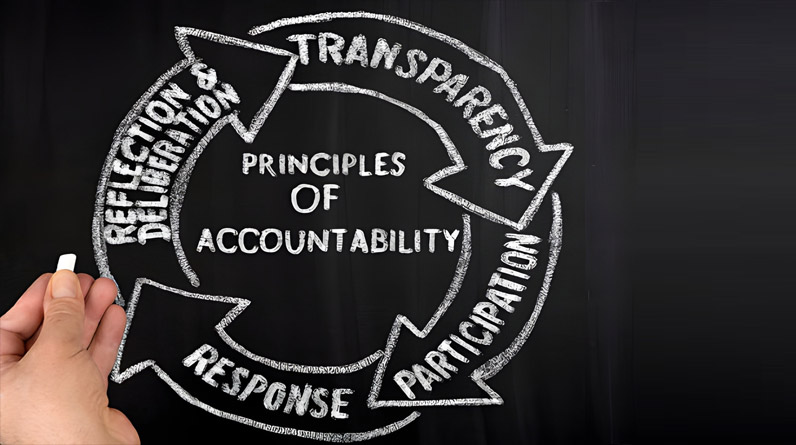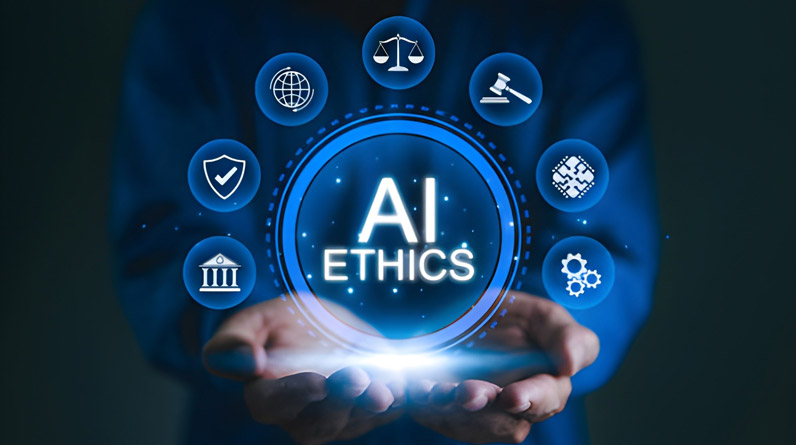Artificial intelligence has become woven into the fabric of our society so seamlessly that we rarely pause to question the ethical implications. From hiring algorithms that evaluate job candidates to facial recognition systems that identify suspects, AI systems make critical decisions affecting millions of lives daily. Yet, while tech companies publish elaborate ethics manifestos and developers debate moral philosophy, a critical gap persists: the vast distance between AI ethics principles and their practical enforcement.
The question “Where should we draw the line?” isn’t really about knowing where the line should be. Industry leaders, researchers, and ethicists broadly agree on the principles: fairness, transparency, accountability, and privacy. The real challenge is enforcement—ensuring these principles translate into actual safeguards rather than remaining aspirational statements in corporate whitepapers.
The Principles vs. Practice Gap: The Real Problem
Every major tech company today has an AI ethics board. Google, Microsoft, OpenAI, Meta—they all publish frameworks and guidelines. Yet problems persist. According to a 2024 Brookings Institution report, despite widespread acknowledgment of bias issues, discriminatory outcomes in AI systems continue to emerge across healthcare, criminal justice, and hiring sectors.
Why? Because agreeing on ethics and building systems that enforce them are entirely different challenges.
Consider this scenario: A healthcare AI system shows better accuracy for diagnosing disease in lighter-skinned patients than darker-skinned patients. Medical teams identified this bias, documented it, and acknowledged it was wrong. But who stops the system from being deployed? Who ensures retraining occurs? Who is liable if a misdiagnosis happens? Without clear enforcement mechanisms, the system often stays in use because the economic incentive to replace it isn’t strong enough.
Understanding the Core Ethical Challenges
1. Bias and Fairness: Beyond Data Representation
Bias in AI is often attributed to skewed training data. This is true, but incomplete. Bias emerges from three distinct sources:
- Data Bias: Historical imbalances in training datasets
- Algorithmic Bias: How the model processes data and makes decisions
- Deployment Bias: How humans implement and interpret AI outputs
A study from MIT found that commercial facial recognition systems had error rates of 34% for darker-skinned women compared to less than 1% for lighter-skinned men. This wasn’t just a data problem—it reflected choices made throughout the entire development and deployment pipeline.
The enforcement question: Who audits these systems regularly? Who mandates corrective action? Most organizations rely on internal review rather than external oversight.
2. Privacy and Consent: The Illusion of Choice
Users encounter privacy policies with thousands of words they never read. They click “I agree” without understanding how their data will be used. AI companies collect behavioral data through countless touchpoints—from voice assistants recording conversations to recommendation algorithms tracking every click.
The fundamental problem: Meaningful consent requires comprehensibility, but AI systems often work in ways even their creators can’t fully explain.
When a smartphone’s facial recognition system fails to recognize someone after they cut their hair, users understand why. But when a credit algorithm denies someone a loan based on factors they don’t understand, “transparency” becomes an empty word.
3. Accountability and Responsibility: The Diffusion Problem
When an autonomous vehicle causes an accident, who bears responsibility?
- The manufacturer who designed the vehicle?
- The software developers who built the algorithm?
- The data scientists who trained the model?
- The company deploying the system?
- The vehicle owner operating it?
Responsibility becomes so diffused that accountability effectively disappears. Each stakeholder can point to others, creating what legal scholars call “accountability gaps.”
The Missing Infrastructure: Why Principles Alone Fail
The gap between ethics principles and practice exists because organizations lack the infrastructure to enforce them. This includes:
| Infrastructure Element | Current State | What’s Needed |
| Independent Auditing | Mostly internal review | Third-party, mandatory audits |
| Impact Assessment | Ad-hoc evaluation | Standardized frameworks for all deployments |
| Monitoring & Surveillance | Limited post-deployment oversight | Continuous monitoring systems |
| Incident Response | Varied protocols | Standardized procedures and timelines |
| Remediation Requirements | Voluntary, inconsistent | Mandatory corrective actions |
| Accountability Mechanisms | Unclear responsibility chains | Clear legal frameworks defining liability |
Without this infrastructure, ethical commitments become PR exercises rather than operational realities.
Building a Practical Accountability Framework

Organizations genuinely committed to ethical AI need structured approaches. Here’s a practical framework:
Step 1: Conduct Pre-Deployment Impact Assessments
Before deploying any AI system, organizations should perform comprehensive impact assessments answering:
- Who will be affected by this system?
- What are the potential harms?
- How will we measure fairness for each affected group?
- What’s our threshold for acceptable error rates?
- How will we provide recourse if the system causes harm?
Step 2: Implement Continuous Monitoring
Deploy monitoring systems that track AI performance across demographic groups in real-time. This isn’t one-time testing—it’s ongoing surveillance for emerging biases and failures.
Step 3: Define Clear Escalation Procedures
When monitoring reveals problems, what happens? Create protocols specifying:
- Who gets notified immediately
- Decision timelines for system adjustment or suspension
- Communication procedures for affected users
- Mandatory reviews and corrective actions
Step 4: Establish External Accountability
Internal processes often fail under business pressure. Consider:
- Independent ethics advisory boards with external members
- Third-party audits on scheduled intervals
- Public disclosure of audit results
- Clear mechanisms for external stakeholders to raise concerns
Real-World Examples: Where Accountability Works
The EU’s approach to AI through the proposed AI Act demonstrates how accountability infrastructure can be mandated. The framework requires:
- Risk assessment before deployment
- Documentation and traceability requirements
- Human oversight mechanisms
- Post-market surveillance obligations
- Clear liability assignments
While imperfect, this regulatory approach creates enforcement mechanisms absent in purely voluntary frameworks.
From Ethics to Enforcement
The conversation about AI ethics often focuses on the wrong question. Instead of asking “What are the ethical principles?” (which we largely know), we should ask: “How do we build systems that ensure these principles are actually followed?”
This requires shifting focus from aspirational statements to operational infrastructure. It means:
- Investing in monitoring and auditing capabilities
- Creating clear accountability chains
- Building mandatory enforcement mechanisms
- Establishing consequences for violations
- Empowering external oversight
Companies that succeed in ethical AI won’t be those with the most eloquent ethics statements—they’ll be those that design enforcement into their systems from the beginning.
Where Do We Draw the Line? A Practical Answer
The line should be drawn where accountability ends and excuses begin. Specifically:
We should draw the line at systems that:
- Cannot explain their decisions to affected parties
- Lack ongoing monitoring for emerging harms
- Fail to provide meaningful recourse mechanisms
- Distribute responsibility so broadly that no one is accountable
- Prioritize business metrics over fairness metrics
- Refuse external oversight and independent audits
These aren’t abstract ethical standards—they’re concrete operational requirements that separate genuine commitments from performative ethics.
The Path Forward
Drawing the line on AI ethics isn’t primarily a philosophical exercise. It’s an operational challenge requiring investment in infrastructure, commitment to transparency, and willingness to accept accountability.
Organizations must ask themselves: Are we committed to ethical AI, or committed to appearing ethical? The answer determines whether we build systems designed to serve society or systems designed to serve ourselves while maintaining ethical cover.
The future of trustworthy AI depends not on better ethics statements, but on better enforcement mechanisms. That’s where we should draw the line.


